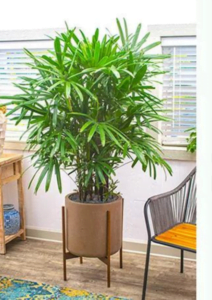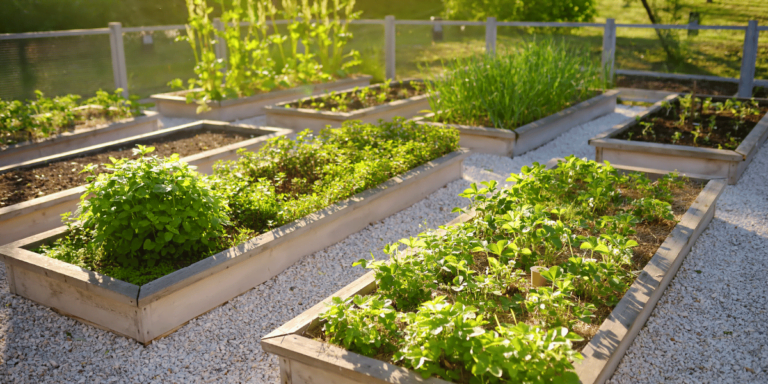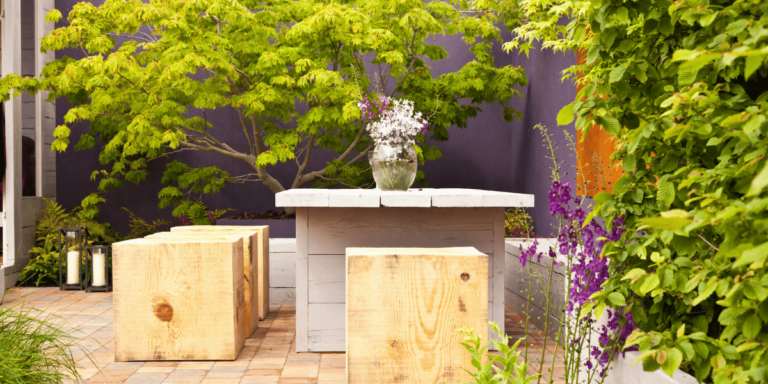Introduction
Embracing the elegance of the Lady Palm (Rhapis excelsa) within the indoor garden sanctuary is akin to weaving nature’s own artistry into the fabric of our homes. This comprehensive review dives deep into the essence of nurturing the Lady Palm, a plant that exudes aristocratic charm and an air of sophistication, yet demands attention to detail in its care. From the subtleties of light and soil composition to the nuances of watering, temperature, and beyond, we unfold the narrative of cultivating this botanical gem. In these pages, we offer not only a guide but a tribute to the Lady Palm, ensuring that your experience with this verdant companion is as fulfilling as it is enduring.
key specifications for the Lady Palm indoor plant:
| Specification | Details and Expansion |
|---|---|
| Common Names | Lady Palm, Rhapis Palm. Each name reflects its graceful appearance and stature. |
| Botanical Name | Rhapis excelsa. The genus Rhapis falls under the Arecaceae family, known for its palm species. |
| Family | Arecaceae. This family includes various palm species known for their adaptability to indoor environments. |
| Plant Type | Evergreen Perennial. It maintains its lush foliage year-round, contributing to its popularity as an indoor plant. |
| Mature Size | Up to 6-12 feet tall and 3-8 feet wide indoors, depending on the growing conditions and the cultivar. |
| Sun Exposure | Prefers moderate to bright, indirect light. Direct sunlight can scorch its leaves, while too little light can hinder growth. |
| Soil Type | Well-draining, loamy soil. It thrives best in a soil mix that allows adequate drainage while retaining necessary nutrients. |
| Soil pH | Slightly acidic to neutral (pH 6.0 to 7.0). Maintaining this pH range is crucial for optimal nutrient uptake. |
| Bloom Time | Rarely blooms indoors; flowering is more common in its natural habitat or mature outdoor specimens. |
| Flower Color | Insignificant, as it rarely flowers indoors. When it does bloom, the flowers are small and not visually prominent. |
| Hardiness Zones | 9 to 11 (USDA zones). It’s mainly grown indoors but can thrive outdoors in these specific zones. |
| Native Area | Native to Southern China and Taiwan. Its origin in a subtropical region influences its care requirements. |
| Benefit | Air purification, aesthetic appeal, non-toxicity to pets. The Lady Palm is renowned for improving indoor air quality and adding a touch of elegance to indoor spaces. Its non-toxic nature makes it safe for homes with pets. |
Enriching Your Greenery Portfolio
The Lady Palm stands as a beacon of lush foliage and resilient nature, making it a prized possession for plant enthusiasts. Each leaflet of its broad fan whispers tales of resilience and adaptability, ensuring it holds a special place in the pantheon of houseplants. This review will meticulously explore the facets of Lady Palm care, providing you with all the knowledge necessary to foster a thriving relationship with this graceful plant.
Plant Care
The Lady Palm, with its elegant fronds and ability to adapt to various indoor environments, is a delightful addition to any indoor plant collection. Care for this plant, while straightforward, requires attention to several critical aspects to ensure its long-term health and beauty. Proper care is an intertwining of science and art, where a balance must be struck between nature’s demands and human aesthetics.
Light
The Lady Palm flourishes in moderate to bright indirect light, casting its verdant grace in the soft glow of a well-placed window. It is a plant that speaks to the dappled sunlight of forest floors, thus emulating such conditions becomes the key to unlocking its potential. Direct sunlight, a ruthless foe, can scorch its leaves, leaving a tale of withered gold rather than vibrant green. It’s about finding that sweet spot, a place where light filters through like a soft whisper, enough to invigorate but not overpower.
Soil
Soil for the Lady Palm should be a hymn of well-draining composition. A loamy, slightly acidic to neutral medium serves as the perfect stage for its roots to perform, allowing the ebb and flow of moisture and nutrients. This plant does not care for the limelight of wet, soggy soils but rather prefers the understated elegance of a well-aerated mix where roots can breathe and grow without the chains of stagnation.
Water
Watering this green muse requires a rhythm, a balanced choreography between too much and too little. The top inch of the soil is the barometer by which one should measure the thirst of the Lady Palm. It speaks when it’s time to water, a gentle plea for hydration when dry to the touch. Overwatering is anathema to its well-being, a sure path to the demise of its root system, while under-watering will slowly cripple its vibrant spirit.
Temperature and Humidity
The Lady Palm asks for a temperate realm, a consistent climate where extremes are but a myth. It relishes in temperatures ranging from 60 to 80 degrees Fahrenheit (15 to 26 degrees Celsius) — a testament to its tropical lineage. Humidity, its silent companion, should mirror the moist embrace of its natural habitat, which is why a humidity level of around 40-50% is a mosaic of ideal conditions.
Fertilizer
The growing season heralds the time for feeding, and a balanced, slow-release fertilizer becomes the banquet for this noble plant. Every two or three months, a sprinkle of this sustenance can sustain its lush foliage. However, one must resist the urge to overindulge the plant; an excess can lead to a quickening of its demise rather than a bolstering of its vitality.
Pruning
Pruning the Lady Palm
is an exercise in aesthetic restraint and horticultural wisdom. It’s not about shaping it to one’s will but removing only the old and spent to encourage new growth. This plant teaches the gardener patience, as it grows slowly and deliberates long on each new frond. Pruning, thus, is less frequent but no less important.
Overwintering
As the chill of winter whispers through our homes, the Lady Palm requires a sanctuary of stability. It finds solace away from the cold drafts and the desiccating heat of radiators. Overwintering this plant is about preserving the status quo, ensuring the continuity of care as if the seasons outside have not turned.
Propagating Plant
Propagating the Lady Palm is a reward for the patient gardener, a chance to expand one’s green family. Division, the most effective method, is a delicate process requiring a gentle hand and a sharp eye, ensuring each offspring has its share of roots and shoots. This is not an act of haste but one of careful deliberation and precision.
Types of Plant
The Lady Palm (Rhapis excelsa) comes in various types, each with its own set of characteristics that cater to diverse aesthetic preferences and spatial constraints. Some of the more popular cultivars include:
- ‘Variegata’: Sought for its splashes of light on the leaves, this variegated variety is a stunning showpiece.
- ‘Zuikonishiki’: A rarer form with striped leaves, displaying a mix of green and yellow hues.
- ‘Koban’: Named for its coin-shaped leaves, this variety is appreciated for its unique foliage shape.
- ‘Gyokuho’: With narrow, fine leaves, it presents an elegant and delicate appearance.
Each type shares the same fundamental care principles, with slight variations perhaps in light preferences and growth rates, making the Lady Palm a versatile choice for plant enthusiasts.
Common Pests & Plant Diseases with Solution
The Lady Palm is relatively resistant to pests and diseases, but it is not invulnerable. The most common foes include:
- Spider Mites: These tiny arachnids weave fine webs and sap the life from the leaves. Combat them by increasing humidity or applying insecticidal soap.
- Scale Insects: These pests attach themselves to the stems and leaves, feasting on the plant’s juices. They can be removed by dabbing with alcohol or using horticultural oil.
- Root Rot: Often a consequence of overwatering, root rot can be deadly. Prevention is key—ensure proper drainage and avoid letting the plant sit in water. If root rot is suspected, repot the plant in fresh, well-draining soil and trim away any blackened roots.
By maintaining vigilant care and reacting promptly to any signs of distress, you can keep these pests and diseases at bay.
How to Get Plant to Bloom
Lady Palms are primarily grown for their foliage and are not known for their flowers when kept indoors. They typically bloom when they reach a certain age of maturity and are grown in an environment that closely mimics their natural outdoor habitat. However, if you’re keen to maximize your chances of seeing a Lady Palm bloom, consider the following:
- Optimal Light: Ensure your plant receives plenty of indirect sunlight.
- Proper Fertilization: Use a balanced fertilizer during the growing season to provide essential nutrients.
Even with the best care, flowering indoors is rare and should be considered a bonus rather than an expectation for the Lady Palm.
Common Problems With Plant
While the Lady Palm is known for its hardiness, certain conditions can stress the plant:
- Yellowing Leaves: Overwatering or poor drainage can lead to yellow leaves. Ensure that your watering schedule is consistent with the plant’s needs and that your pot and soil provide proper drainage.
- Stunted Growth: This can occur from insufficient light or nutrition. Position your plant in a well-lit area and follow a regular fertilization schedule during the growing season.
- Brown Leaf Tips: This is often a sign of dry air or low humidity. Consider using a humidifier or placing a water tray near the plant to increase humidity.
By being attentive to these issues, you can quickly address and correct them, maintaining the health and beauty of your Lady Palm.
Quickly Declining
When a Lady Palm declines, it sends signals—a browning leaf, a sluggish stance, a fading green. These are cries for help, and the astute plant parent must become a detective, sleuthing out the cause, be it root rot from overwatering or the suffocating grip of poor light. Rescue involves reassessment and swift, corrective care.
Cultivating Success: Ensuring the Flourishing of Your Lady Palm
In the end, the journey of caring for the Lady Palm is akin to cultivating a living sculpture, one that grows and adapts over time. Success in this endeavor is marked by the lush foliage, the strength of its stance, and the quiet joy it brings to indoor spaces. This chapter is not simply a conclusion but a commencement of a lifelong cultivation of beauty.
Frequently Asked Questions
Decode the magic of gardens with our guide to Landscaping Styles Frequently Asked Questions.
- The Lady Palm revels in snug quarters, so repotting is not a frequent necessity. Every 2 to 3 years, or when you notice the roots have consumed the soil, is an appropriate time to provide it with a new home, just one size larger to maintain its comfort
- While the Lady Palm is tolerant of lower light conditions, it thrives best in moderate to bright indirect light. Growth in low light may be slower, and the plant may not achieve its full lushness.
- Browning tips can be a sign of low humidity, fluoride in water, or over-fertilizing. Ensure that your plant is in an environment with adequate humidity and water it with filtered or rainwater if possible. Fertilize sparingly and according to instructions
- Yes, the Lady Palm is non-toxic and pet-friendly, making it a wonderful addition to homes with furry companions. However, as with all plants, it is still best to keep it out of reach to prevent any potential damage from curious pets













